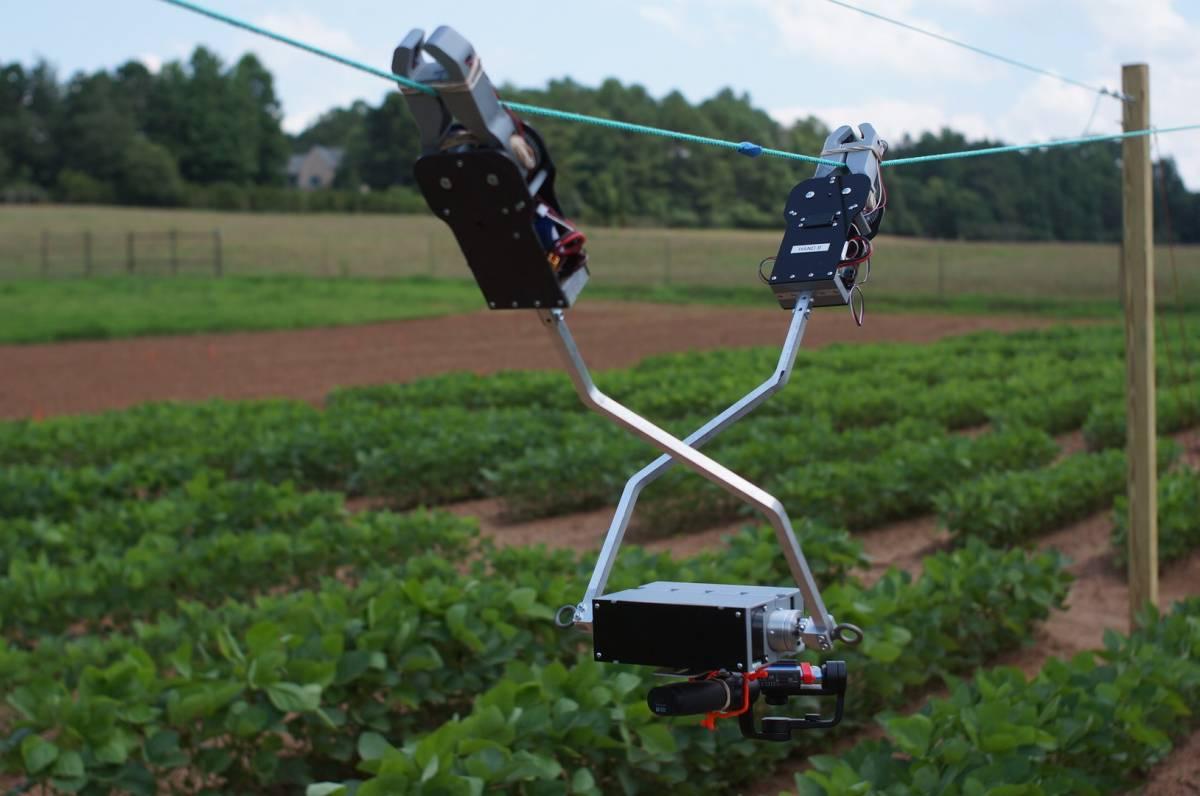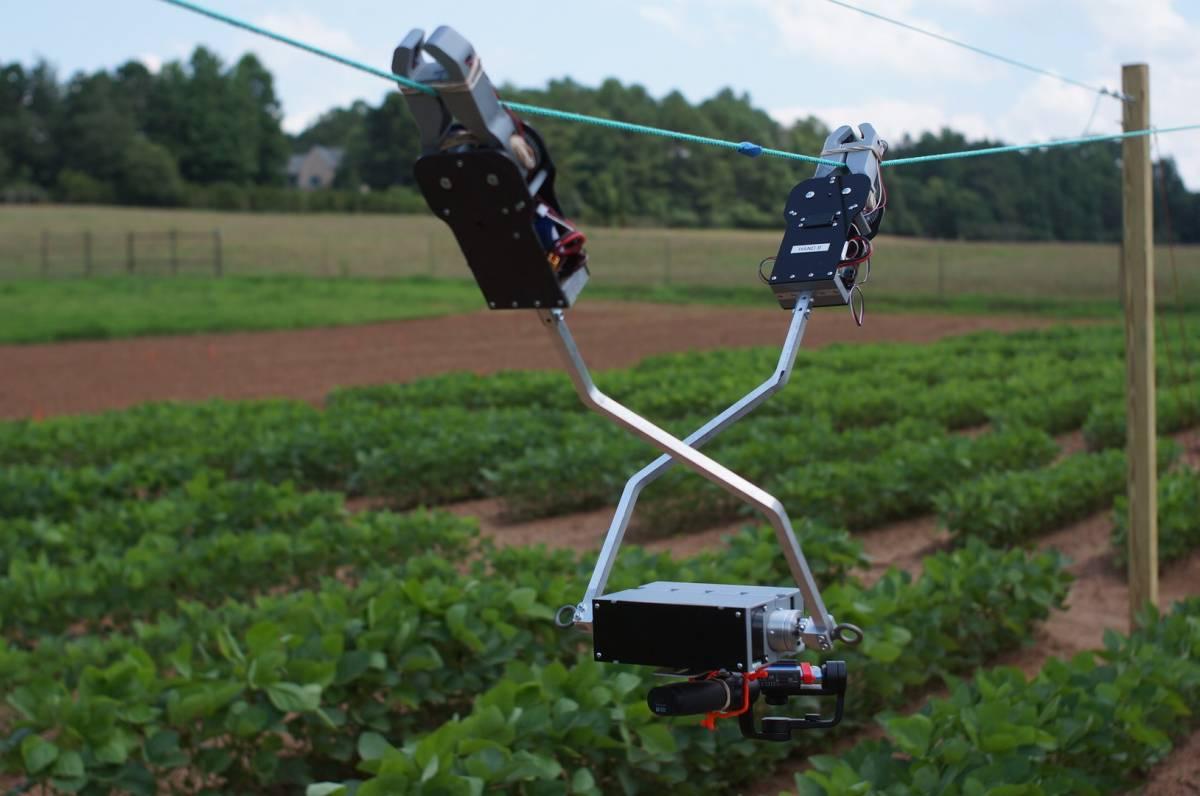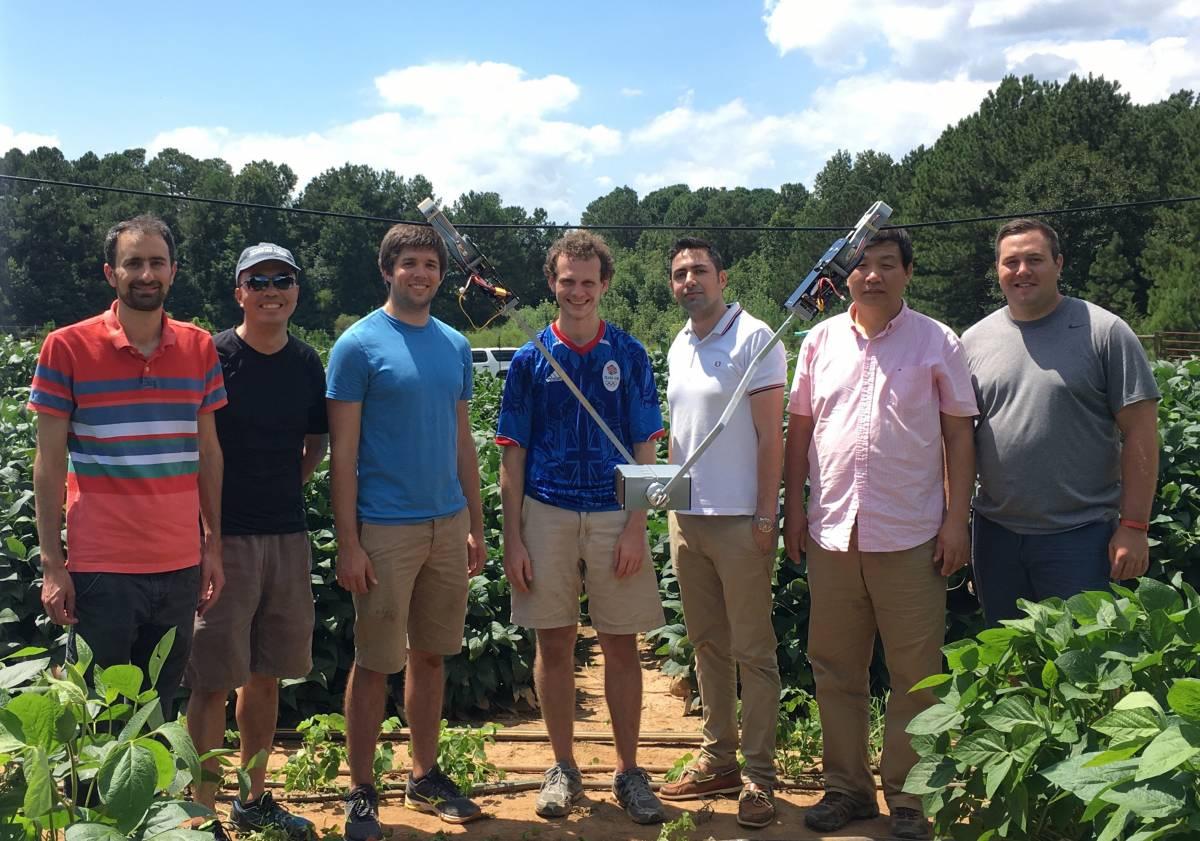Engineers are building a new type of robot, and it’s going to revolutionize farming

A woman stands in a soybean field in Athens, Georgia, baking in the summer sun as she leans down to measure the angle at which a leaf wilts toward the earth. She’s a graduate researcher trying to determine which of the soybean varieties planted in the field are most resistant to the oppressive heat and lack of rain. She wipes sweat from her brow and continues down the row. This is the seventh time this summer she has made her way through this soybean field, meticulously taking measurements.
She’s researching soybean phenotypes — the outward expression of each plant’s genetics. Researchers plant various strains of the same crop, like soybeans, and then meticulously study acres of plants in order to determine which strain is most drought resistant. Hopefully, this will be one of her last summers manually monitoring the plants — advances in automation are just around the corner. Georgia Tech robotics engineers are in the final stages of refining technology that can automate the tedious and time-consuming process of examining crops.
“Since [researchers] have all these genetic varieties, the only way they can tell which ones will thrive in arid environments and propagate is to do testing like this,” said Ai-Ping Hu (MS and PhD, Mechanical Engineering), the principal investigator for this project and a researcher in the Food Processing Technology Division of the Georgia Tech Research Institute. “It's basically in vivo testing. Whatever the natural soil conditions are, whatever's in the air, that's all taken into account. You can’t replicate that experiment in an inside laboratory.”
Georgia Tech engineers have come up with what they think is the perfect way to automate phenotype studying: a robot that swings on cables suspended above the fields. It might sound like something from the future, but the swinging robot is very real. It moves via “brachiation,” which is the technical term used to describe the ways primates swing from tree to tree. Brachiation is an entirely new form of robotic movement, and Georgia Tech researchers are the first in the world to develop a robot that brachiates on flexible cables. Researchers say it is more energy efficient and adaptable than other forms of robotic movement.
Hu and his team are developing the robot in partnership with the UGA Soybean Breeding and Molecular Genetics Laboratory to more efficiently conduct field research. However, Hu speculates that the robot could become a valuable asset to farmers as a persistent, rather than intermittent, tool to monitor crops.
In the center of the brachiating robot is a small platform that houses sensors, such as thermal detectors or 3D cameras. Two arms extend from the platform, each bearing a grasper with the ability to precisely sense where the cable is and when to clamp around it. The movement of the machine is reminiscent of a child swinging on a jungle gym; it swings from one arm until it has enough momentum for the other arm to reach up and catch the next portion of the cable.


Mechanical devices such as unmanned aerial vehicles have begun to be used to survey fields. However, these drones must be flown by humans and only for short periods of time. In comparison, the brachiating robot uses very little power and could use small solar panels to charge during the day and independently traverse the fields via wires at night. Plus, nighttime monitoring would be advantageous, because plants exhibit some of their most distinctive behaviors after the sun sets, such as respiration and opening of the leaf pores.
One of the challenges in developing the brachiating robot has been designing specific electronics and software for the hardware components of the machine.
“We have inertial measurement units that allow us to determine how fast the different linkages are moving, how fast the body is moving, and where they are in space,” said Michael Bick, an undergraduate student in mechanical engineering. “We use all of that information, constantly updating as we swing to try to follow the ideal path that uses the least amount of power required.”
The robot is unlikely to entirely replace farm workers any time soon. They still must carefully determine whether fruit and nuts are ripe before picking them. However, the robot may be able to augment the workforce where labor is lacking. A Georgia immigration law in 2011 caused laborers to leave the state, and the state lost $140 million of crops that were left unpicked. With the brachiating robot as a tool for persistent monitoring, farm owners may be able to better determine which plants are ripe, and which may need more attention.
The robot is far from finished. The most recent development in the project was the addition of “wrists” for the robot that would allow it to turn 90 degrees and swing onto an adjacent parallel wire. Instead of traveling along a line, the brachiating robot could cover the entire 2D plane of a crop field.
In the not-so-distant future, instead of graduate researchers trudging through a field of soybeans, you might see primate-like robots swinging around on wires above fields, making sure plants are healthy and Georgia families are fed and full.
